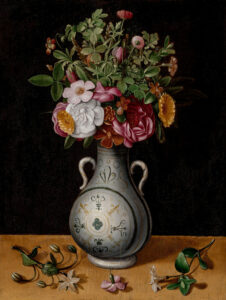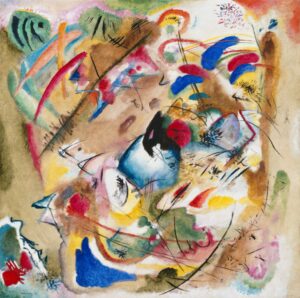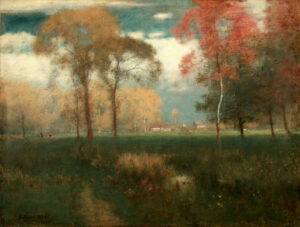
Münster, early 1560s. Ludger tom Ring the Younger arranges roses, wallflowers, and violets before him. He observes each petal, each vein. Nature becomes worthy of his brush.
A Meticulous Celebration of Northern Flora
The lattimo vase, an opaque white Venetian glass, holds more than fifteen plant species. Cultivated roses, crimson wallflowers, delicate violets, aromatic rosemary. Ludger tom Ring paints each flower with precision. Uniform lighting reveals the textures. Shadows cast on the table bring the composition to life. On the gilded wood, scattered flowers extend the bouquet. This modest format of 38 × 29 cm acquires surprising monumentality. The meticulous technique produces a polished, almost porcelain-like surface.
The German Botanical Renaissance
This work marks a decisive turning point. Flower painting becomes an autonomous pictorial genre. Before tom Ring, Schongauer and Dürer drew plants. He elevates them to the rank of noble subject. No exotic tulips here, unlike future fashions. The painter celebrates the wildflowers of northern Europe. This approach is part of the naturalistic observation of the Renaissance. Each species possesses its own dignity. Art meets nascent botany.
Ludger tom Ring the Younger
Ludger tom Ring the Younger (1522-1584) perpetuates the family tradition in Münster. Son and brother of painters, he excels in portraiture and still life. His contribution to floral painting remains major. He transforms botanical study into pictorial masterpiece.
Think about it
💭 In depicting these flowers destined to fade, does the artist seek to transcend death or simply to celebrate the fleeting beauty of life?
About This Work
- Bouquet of Flowers in a Two-Handled Vase
- Ludger tom Ring the Younger
- early 1560s
- Oil on oak panel
- 38 × 29 cm (14 15/16 × 11 7/16 in.)
- J. Paul Getty Museum, Los Angeles
- https://www.getty.edu/art/collection/object/1149BK






